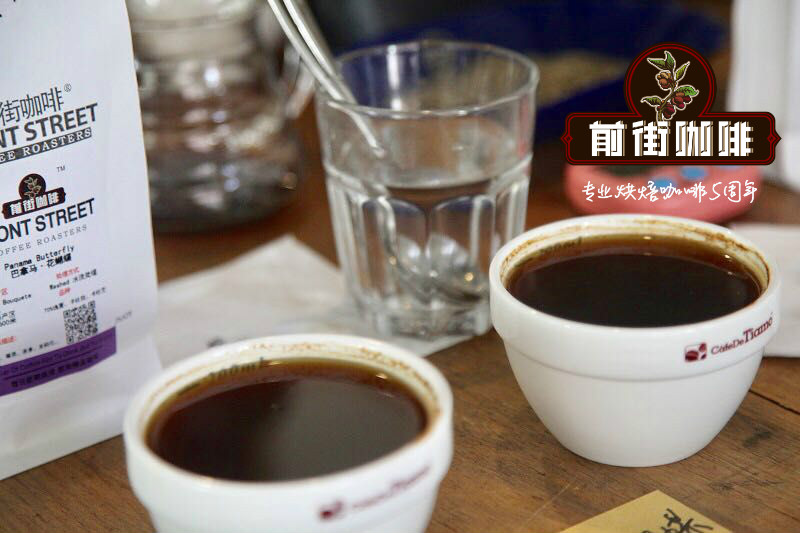Introduction to the characteristics of price, taste and flavor description of Arabica species of Colombian coffee
Introduction to the characteristics of price, taste and flavor description of Arabica species of Colombian coffee
Rich in production
Colombia is rich in products, especially coffee, flowers, gold and emeralds are known as the "four treasures". In 1808, a priest introduced coffee to Colombia for the first time from the French Antilles via Venezuela. Today, the country is the second largest coffee producer after Brazil, the world's largest exporter of Arabica coffee beans and the world's largest exporter of washed coffee beans. Colombian coffee is often described as silky and smooth. Of all the coffees, it is the most balanced, soft, smooth and ready to drink, and it has won praise that no other coffee can match: known as "green gold". Colombia, located in the northwest of South America, is a beautiful country with a long history. Indians have lived on this land since ancient times. It was colonized by Spain in 1531 and gained independence in 1819. It was renamed in 1886 to commemorate Columbus, the discoverer of the American continent. Colombia has beautiful mountains and rivers, beautiful scenery, pleasant climate, spring all year round, fresh air and refreshing air. Walking in the streets of Bogota, the capital, I feel relaxed and happy. The weeping willow with green branches and green leaves swayed in the air with the breeze; the tall and straight palm trees, like ancient copper-skinned giants, lined up with large umbrellas to greet visitors from afar; the blooming kapok tree opened its bright red leaves, as if holding a fiery heart to greet friends. This is the bourbon mutant found in Brazil, with low height, small beans, high yield and leaf rust resistance. The disadvantage is that it will only bear fruit in the coming year, that is, it can only be harvested once every two years. Although the quality is high, the cost of care and fertilization is quite high, so it is suitable to be cultivated in the middle and high land with an altitude of 450-1700m and annual rainfall 2500~3500mm. It is characterized by sour taste and slightly stronger astringency.
Mondo Norwood (Mundo Nove)
A natural hybrid of bourbon and Sumatra found in Brazil. Strong environmental adaptability and resistance to diseases and insect pests, although it is a high-yield variety, but the growth rate is slow, and the bean grain is too large. The book height of more than 3 meters is its disadvantage (this height has exceeded the height of the harvester, so it is not suitable for the mechanization of coffee harvesting), it is necessary to trim the top branches and leaves of the coffee tree every year. It was planted in Brazil around 1950 and is now the main variety in Brazil along with Kaddura and Kaduai. Mondonovu has a good balance of sour and bitter taste, and its taste is close to the inherent variety, so it was sought after by the public as soon as it was launched, and it was named "Mundo Nove" (New World).

Important Notice :
前街咖啡 FrontStreet Coffee has moved to new addredd:
FrontStreet Coffee Address: 315,Donghua East Road,GuangZhou
Tel:020 38364473
- Prev

How much does Arabica coffee cost? Flavor Description Taste Variety Introduction
Arabica coffee is popular among Chinese people who have a short history of coffee contact because of its rich fruity aroma. It was introduced to China by missionaries in the 19th century. It is widely cultivated in Panzhihua, Sichuan Province and Jinsha River dry and hot valley area with an altitude of more than 1000 meters in western Yunnan Province. The sunshine hours are long and the temperature difference between day and night is large. The local people use water diversion.
- Next

Panama Flower Butterfly Coffee Taste Flavor Description Processing Variety Introduction
Boquete is a volcanic region at high altitude, because Baru Volcano brings quite fertile soil, high terrain, wet and cold air, different sunshine, abundant rainfall, and rivers flow through it, resulting in high quality Panamanian fine coffee. This batch is from the same factory as Emerald Manor.
Related
- Detailed explanation of Jadeite planting Land in Panamanian Jadeite Manor introduction to the grading system of Jadeite competitive bidding, Red bid, Green bid and Rose Summer
- Story of Coffee planting in Brenka region of Costa Rica Stonehenge Manor anaerobic heavy honey treatment of flavor mouth
- What's on the barrel of Blue Mountain Coffee beans?
- Can American coffee also pull flowers? How to use hot American style to pull out a good-looking pattern?
- Can you make a cold extract with coffee beans? What is the right proportion for cold-extracted coffee formula?
- Indonesian PWN Gold Mandrine Coffee Origin Features Flavor How to Chong? Mandolin coffee is American.
- A brief introduction to the flavor characteristics of Brazilian yellow bourbon coffee beans
- What is the effect of different water quality on the flavor of cold-extracted coffee? What kind of water is best for brewing coffee?
- Why do you think of Rose Summer whenever you mention Panamanian coffee?
- Introduction to the characteristics of authentic blue mountain coffee bean producing areas? What is the CIB Coffee Authority in Jamaica?

